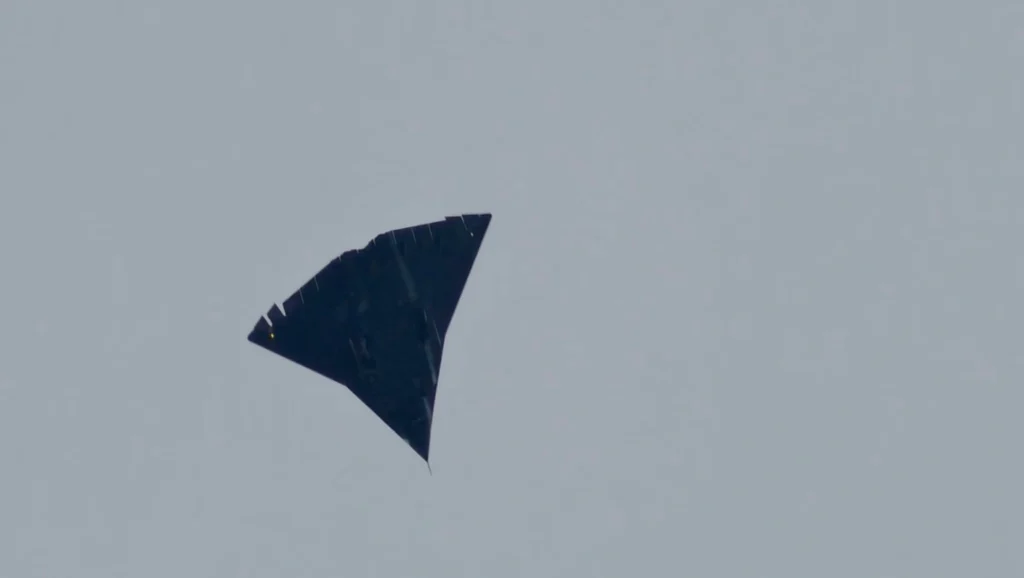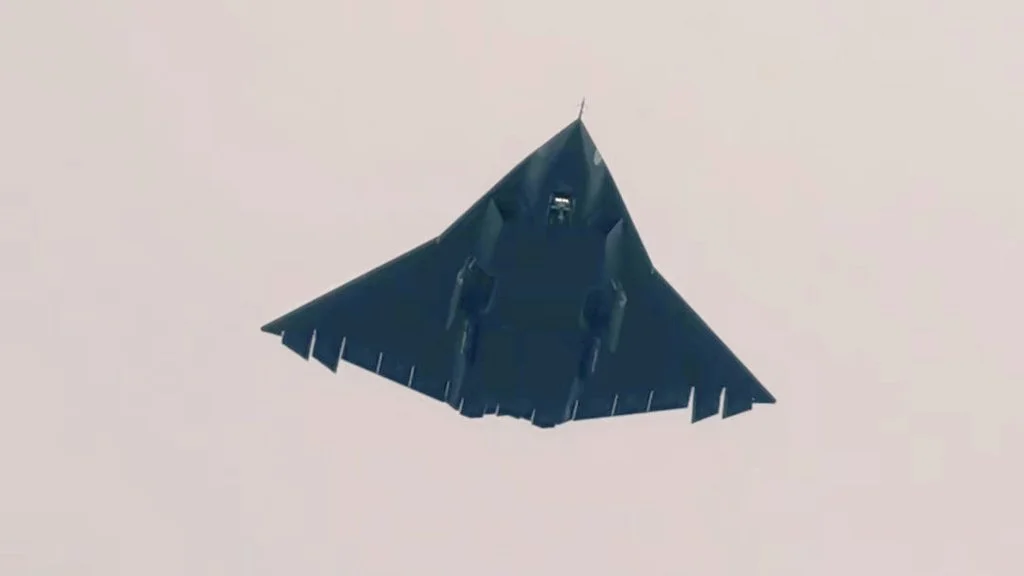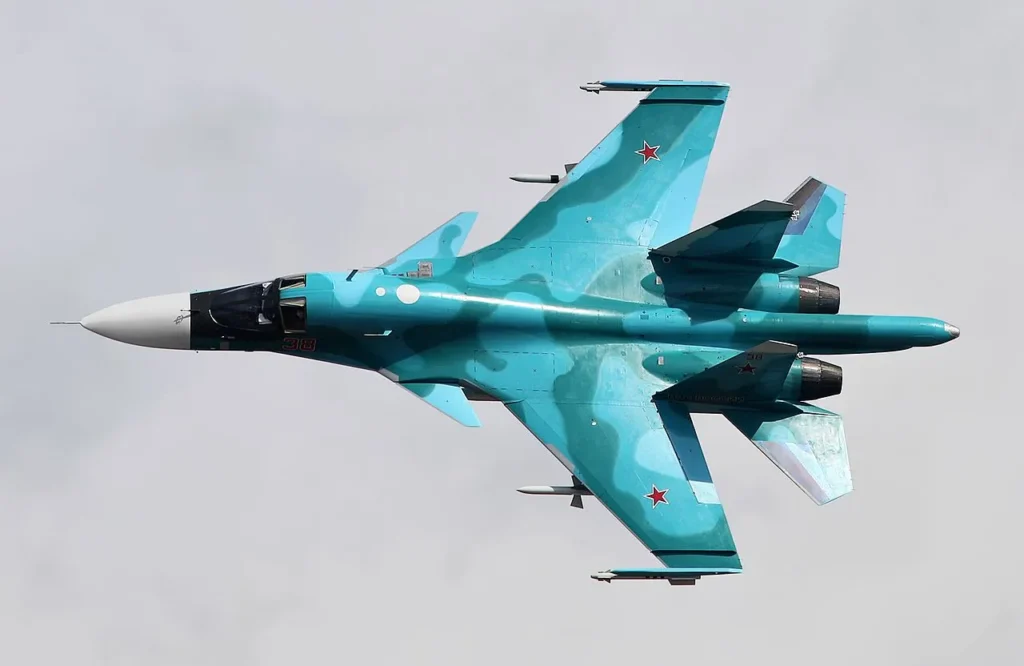
Передовой Китай 6-го поколенияВоенный самолет J-36 Это было сделано во время того, что, по мнению аналитиков, является Второй испытательный полет. Многие фотографии показывают, что истребитель следующего поколения все еще находится на ранних стадиях разработки.
Предполагаемый китайский истребитель следующего поколения, известный как J-36, был снят на камеру, летящую на небольшой высоте над городским районом. Любительские кадры и фотографии, циркулирующие на китайских платформах социальных сетей, показывают самолет, проходящий над головой, записанный обычными гражданскими лицами с помощью камер смартфонов.
 J-36 Китай; Фото: @RupprechtDeino (X)
J-36 Китай; Фото: @RupprechtDeino (X)Новое наблюдение показывает прогресс в развитии
Недавние неофициальные видео и изображения в китайских социальных сетях показывают, что J-36 летит на небольшой высоте над городом. Эти записи, снятые гражданскими лицами с помощью телефонных камер, обеспечивают новые перспективы самолета.
Самолет делал повороты с удлиненным шасси. Установленный на носу зонд летных данных подтверждает, что самолет остается на предварительных этапах испытаний. Это далеко не оперативная готовность или массовое производство.
Первое публичное появление и связанные проекты
The J-36 первоначально появился в сети 26 декабря 2024 года, летая из штаб-квартиры авиастроительной корпорации Чэнду (CTU).. В тот же день кадры запечатлели еще один футуристический дизайн в Shenyang (SHE) Aircraft Corporation, по слухам, истребитель J-XX.
Связь между этими двумя самолетами остается неясной, и неясно, представляет ли J-XX еще одну конструкцию пятого или шестого поколения, предназначенную для дополнения J-36.
Во время первого наблюдения J-36 летал в сопровождении двухместного J-20S, а за вторым планером следовал производный Flanker китайского производства, либо J-11, либо J-16.
Особенности дизайна и конфигурация
J-36 имеет бесхвостую конфигурацию летающего крыла с тремя насадками двигателя. Недавние изображения показывают то, что кажется яркими выхлопными газами, похожими на форсунки из этих сопл, хотя некоторые аналитики сомневаются, что некоторые изображения могут быть изменены.
Самолет имеет два впуска двигателя под крыльями рядом с фюзеляжем и один спинной впуск за кабиной. Его конфигурация шасси включает в себя двухколесную носовую передачу и тандемные основные шасси Похож на российский истребитель-бомбардировщик Су-34 Fullback.
Боковые виды показывают черно-серую схему маскировки. Нижняя и задняя перспективы показывают разделенные поверхности управления задней кромкой, которые функционируют как воздушные тормоза для увеличения сопротивления и снижения скорости.
Пространство между двумя основными шасси, вероятно, содержит внутренние оружейные отсеки, предназначенные для больших ракет дальнего радиуса действия. Будущие демонстрации могут показать, что эти бухты полностью открыты, подобно тому, как оружейные бухты J-20 были впервые показаны во время Чжухайского авиасалона 2018 года.
 J-36; Фото: @Hurin92 (X)
J-36; Фото: @Hurin92 (X)Расширенная аэродинамика и особенности Stealth
Плавные контуры J-36 предлагают оптимизацию для обеих моделей. аэродинамическая эффективность и низкая видимость радара. Этот подход к проектированию потенциально обеспечивает более высокие скорости, большую передачу кинетической энергии для запуска ракет и снижение вероятности обнаружения радарами.
Маневренность и стабильность, вероятно, зависят от передового программного обеспечения управления полетом и алгоритмов управления следующего поколения, а не от традиционных аэродинамических поверхностей.
Спекуляции двигателя
Некоторые оценки показывают, что самолет может быть приведен в действие либо турбовентиляторные двигатели WS-10Cили сверхкруизные двигатели WS-15. Эти двигатели предназначались для будущих вариантов истребителей-невидимок J-20.
The WS-15 считается китайским аналогом Pratt & Whitney F135. Это приводит в действие истребители F-35 или российские турбовентиляторы Saturn AL-41F1S, используемые в истребителях Су-35С. В то время как конкретные детали двигателя остаются спекулятивными, китайские инженеры, вероятно, преследуют технологию адаптивного цикла двигателя, аналогичную тем, которые разрабатываются для американской программы Air Dominance следующего поколения.
Двигатели с адаптивным циклом представляют собой передовые двигательные установки, выходящие за рамки существующих систем полного цифрового управления двигателем (FADEC), способные автоматически регулировать тягу и расход топлива в разных режимах полета.
 Су-34 Россия; Фото: Википедия
Су-34 Россия; Фото: ВикипедияНечеткая классификация поколений
Эксперты пока не могут проверить Китай утверждает, что эти конструкции представляют собой самолеты шестого поколения. Определение шестого поколения остается дискуссионным. Существуют различные интерпретации, описывающие такие самолеты как многоцелевые платформы, средства воздушного превосходства или координирующие элементы более крупных сил атаки.
В отличие от предыдущих разработок китайских военных самолетов, ни J-36/JH-XX, ни J-XX не появлялись в официальных рендерах или видео из государственных СМИ, таких как CGTN, CCTV или военные медиаканалы. Такие официальные презентации, как правило, отражают мнение китайских военных планировщиков и приоритеты аэрокосмической промышленности.
J-36, также обозначенный как JH-XX в некоторых отчетах, может служить в качестве регионального бомбардировщика, включающего возможности. Планируется, что китайская программа стратегических бомбардировщиков H-20 будет представлять собой значительный прогресс в технологии китайских боевых самолетов.
Оставайтесь с нами. Следуйте за нами в социальных сетях для последних обновлений.
Присоединяйтесь к нам в Telegram Group для последних обновлений авиации. Следуйте за нами в Google News
Китай строит крупнейший аэропорт на искусственном острове в Даляне
Новый Glimpse 6-го поколения военных самолетов Китая впервые появился на Aviation A2Z.












